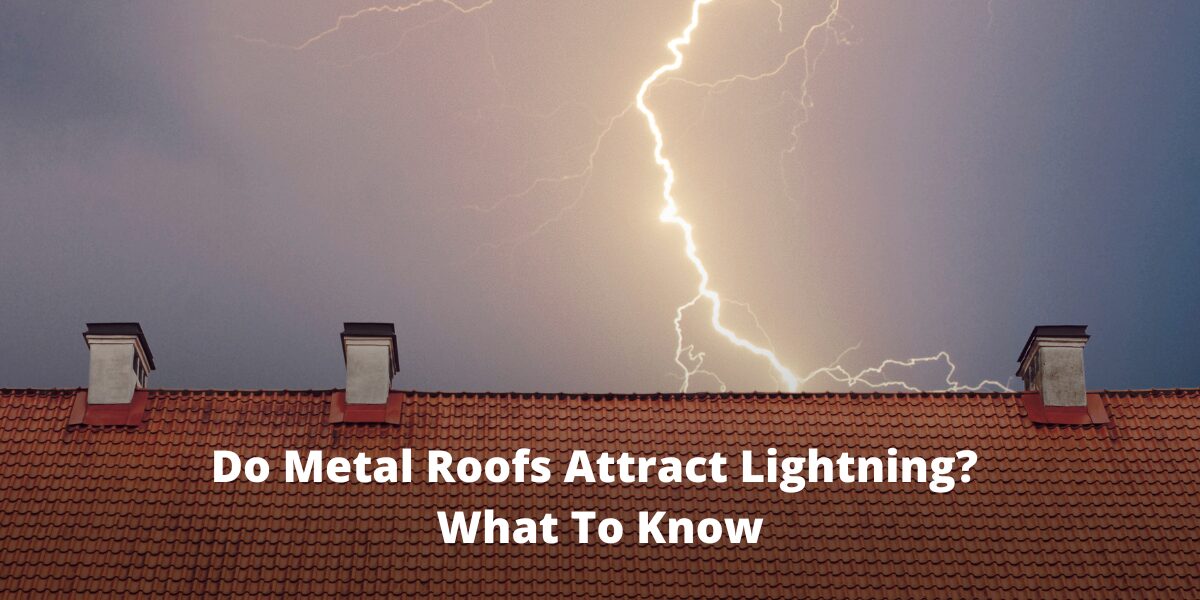You’ve probably heard it—or maybe even worried about it yourself: metal roofs attract lightning.
Sounds logical, right? Metal conducts electricity, after all.
But here’s the surprise—metal roofs aren’t more likely to be struck and they can actually protect your home if lightning hits.
We’ll unpack why metal roofing might be one of the safest choices during a storm.
Key Notes
- Metal roofs don’t attract lightning – height and location are the actual determining factors.
- Properly installed metal roofs can actually provide better protection during lightning storms.
- Insurance companies often offer discounts for metal roofs due to their superior weather resistance.
- Professional grounding systems maximize safety benefits of metal roofing during electrical storms.
Understanding Lightning and Roofing Materials
To address whether metal roofs attract lightning, we first need to understand how lightning works and what factors actually determine where it strikes.
The Science Behind Lightning Strikes
Lightning follows the path of least resistance to the ground, and the composition of your roof plays a minimal role in this process.
What actually attracts lightning is:
Lightning Risk Factors
|
While metal is an excellent conductor, it doesn’t attract lightning. Instead, it efficiently conducts electricity if it happens to be in the path of a strike, determined by other factors.

Conductivity vs. Attraction: Debunking the Myth
The confusion between conductivity and attraction lies at the heart of this persistent myth.
Metal roofs conduct electricity well, but they don’t create the conditions that attract lightning in the first place.
Metal roofing is no more likely to attract a lightning strike than any other type of roofing material. Lightning is influenced by the shape and height of objects and their surroundings, not their material composition.
When lightning does strike a structure, a metal roof can actually provide better protection than non-metallic alternatives because it:
|
Metal Roofs: Safety and Protection
Far from being a liability during storms, properly installed metal roofs can be an asset for home protection.
Grounding and Installation Best Practices
The key to maximizing safety with a metal roof lies in proper installation and grounding.
Here’s what proper installation entails:
|
For homes in lightning-prone areas, additional protection might include:
|
Common Myths and Misconceptions
Let’s address some of the most prevalent misconceptions about metal roofs and lightning:
Historical Origins of the Metal Roof Myth
The belief that metal attracts lightning dates back centuries, originating before modern understanding of electricity.
Early metal roofs were often installed on barns and tall structures, which were indeed more likely to be struck due to their height and isolation—not their metal composition.
Additionally, when lightning does strike a metal roof, the visual and auditory effects can be dramatic, reinforcing the misconception that the metal “attracted” the strike.
Insurance and Risk Assessment
Despite the persistent myth, insurance companies don’t penalize homeowners with metal roofs.
In fact, many offer discounts because metal roofs provide superior protection against other weather hazards like hail, wind, and fire.
According to the Insurance Institute for Business & Home Safety, homes with metal roofs have about 50% fewer weather-related insurance claims than those with asphalt shingles, thanks to their superior durability against hail, wind, and snow.
This leads to lower premiums, with some homeowners saving around $300 annually. Insurers view metal roofs as a lower risk due to their fire resistance, impact durability, and long lifespans—often 50+ years.
Comparative Analysis: Metal Roofs vs. Other Materials
How do metal roofs actually compare to other roofing materials when it comes to lightning protection?
Material Properties and Lightning Safety
Different roofing materials have varying properties that affect how they respond to lightning strikes:
Metal Roofing:
|
Asphalt Shingles:
|
Tile Roofing:
|
Cost-Benefit Analysis
When considering the long-term benefits of metal roofing in storm-prone areas, several factors come into play:
Metal Roofing Benefits
|
The initial investment in a quality metal roof typically pays dividends through these long-term benefits, making it a financially sound choice for many homeowners—particularly those in regions with frequent severe weather.
Want A Roof That Lasts & Lowers Insurance Costs?
Metal roofing delivers safety, savings, and serious storm protection
Frequently Asked Questions
Does a metal roof increase my home insurance rates due to lightning concerns?
No, most insurance companies actually offer discounts for metal roofing because of its durability and fire-resistant properties. The misconception about metal roofs attracting lightning doesn’t typically affect insurance premiums.
How long does proper grounding of a metal roof system last?
A properly installed grounding system should last the lifetime of your roof with minimal maintenance. However, it’s recommended to have it inspected every 3-5 years, especially after severe weather events.
Can I install a lightning protection system myself, or do I need a professional?
Lightning protection systems should always be installed by certified professionals. These systems require precise installation to meet safety standards (UL96A or NFPA 780) and improper installation can create safety hazards.
Are there specific maintenance requirements for metal roofs to maintain their lightning safety features?
Regular inspections to ensure grounding connections remain secure and corrosion-free are recommended. Check for loose fasteners or damage after severe storms, as these could compromise the roof’s ability to properly disperse electrical energy.
Conclusion
The idea that metal roofs attract lightning just doesn’t hold up under scrutiny. What matters most is where your home sits, not what your roof is made of.
In fact, metal can actually make your home safer by dispersing electrical energy and resisting fire. When properly grounded, a metal roof becomes one of the most reliable choices during a storm—not a liability.
If you’re considering a roof that can stand up to storms, save you money over time, and last for decades, reach out for a quote. We offer free consultations, expert guidance, and support with insurance and financing!

